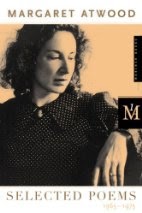We round out the
first Women Writers Month on “Likely Stories” with a wide-ranging and
interesting collection of writings in multiple genres. Creative non-fiction leads off, followed by
song, poetry, fiction and an interesting section on “Lagniappe: An Editorial
Extrusion.” A lagniappe is a small gift
given to a customer by a merchant following a purchase, for example, a
thirteenth donut when someone purchases twelve.
Three of the editors contributed to this section. Rachel Crawford begins with “First Names,” an especially interesting short story. Cassy Burleson
adds five fine poems, and novelist Donna Walker-Nixon contributes an excellent
short story, “Johnny Messy Skin.”
This volume,
published in 2015 contains so many impressive works, I hardly know where to
begin to offer samples, as I usually do.
Among the creative non-fiction pieces, I especially liked Betty
Wiesepape’s interesting and detailed story of a marriage in the beginning of
the twentieth century. Wiesepape writes,
“Ransom Filmore Holland took Vera Kate Bruner to be the mother of his five
children on December 24, 1913. It was
not the kind of wedding young women dream about. No courtship, no matching gold bands, no long
white wedding dress – only a hurried buggy ride to purchase a marriage license
and stand before a justice of the peace before the Smith County courthouse
closed for the Christmas holiday” (55).
Santa never delivered a wedding present quite like he did that day.
Amanda Pearcy wrote
four songs, and I especially appreciated “Make Me a Pallet on the Floor.” Perry
wrote, “Mama prepare, prepare a room for me. / Mama make me a pallet on the
floor to sleep / I’m comin’ home to you / I’m comin’ home to you / I ain’t
gonna go on like this no more // Papa bring your mean, bring your mean on me /
Papa ain’t no mean I ain’t known or seen / I’m comin’ home to you / I’m comin’
home to you / Like the Prodigal Son, I’m comin’ home” (179). Like many of the works in this collection,
women’s anguish, hope, fears, and joy are expressed with words of truth and
emotion.
The collection of
poetry contain a number of well-known writers.
Anne McCrady has a reputation in Texas, and someday, I believe her value
as a poet will expand well-beyond the Lone Star State. In “camp Song,” she wrote, “In the pale light
/ of a canvas tent dawn, / cicadas kazoo / the last verses of their camp song,
/ that tinnitus of summer. / Hidden in beds of thin grass, / crickets whistle /
their own tinny hymn / and out by the pond, / amorous tree frogs blurt / wet
advances too late for now / for evening love” (259). A poet, who can write such a tender, pleasing
poetry, full of vivid images, certainly deserves a wider audience.
The fiction
selection also presented some difficult choices for a favorite, but since I
love – and play – word games, I am going to go with Laurie Champion’s neat and
compact little slice of life story, “I’m Her(e).” A couple meet up in a motel room and duel
with pronouns. Champion writes, “We
laughed a lot. ‘Knock-knock,’ you said
one morning when you heard my knock at your hotel door. // ‘Who’s there?’ I
asked. //’It’s I’, you said. You cracked
open the door. // ‘Yeah,’ I said. ‘It’s
me.’ You told me I should keep my
pronouns straight, said something about subjects and objects and explained the
difference between the use of me and I, her and she. I listened to you,
watched you smirk. I stood outside the
room and waited for you to open the door wider, invite me in. You finished talking, paused, and looked at
me, gazed at me as though sizing me up.
Not quite sure what to say, I finally twisted one corner of my mouth
into a faint smile and said, ‘It’s you,’ I said. ‘I’m here.’ // ‘This is he,’ you said. //
‘I’m hemmed,’ I said. I rolled my eyes
and wondered why I told these stupid jokes, played dumb word games. Perhaps it was part of our agreement. Our unspoken promise to each other not to
take things seriously, or too seriously, as
you once put it” (316). Seems to me
these two have a case of the nerves, and from the mention of another woman, I
am betting this is a tale with a tryst.
Interspersed among
the writing are many interesting black and white photos of children, adults,
and flowers, portraits and landscapes.
Also included are a number of photos of drawings and paintings. These images make wonderful decorative
elements among the words.
While Her Texas: Story, Image, Poem, & Song Edited by Donna Walker-Nixon, Cassy
Burleson, Rachel Crawford, & Ashley Palmer does have some pieces less equal
than others, it most certainly would make a wonderful gift to the reader in
your life. This celebration of woman
belongs on every reader’s book shelf. It
has plenty of writing to justify 5 Stars.
--Chiron, 3/15/15












